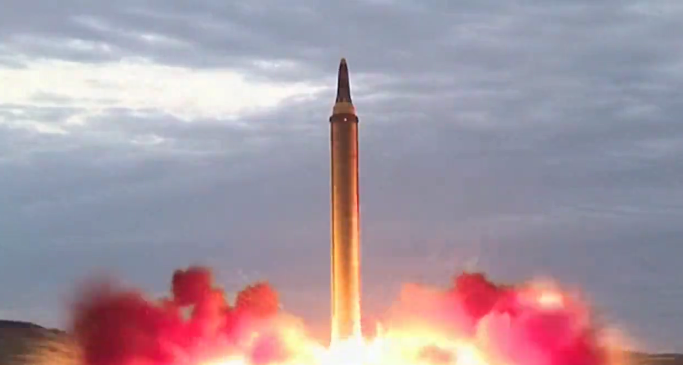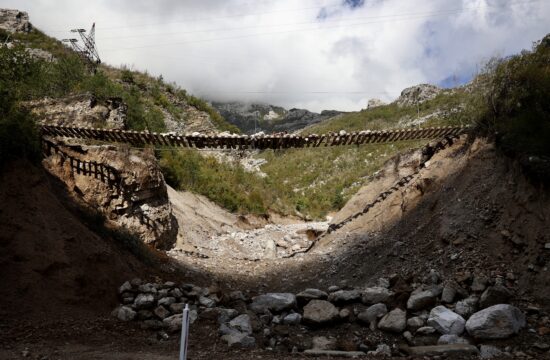
North Korea fired a ballistic missile Wednesday from an underwater launch platform, a United States official told CNN, a day after Pyongyang and Washington agreed to resume nuclear talks.
The US assessed that the missile was not fired from a submarine although the tested missile is designed to function as a submarine-launched ballistic missile (SLBM), the US official, who was familiar with the situation, said.
The missile was launched toward the East Sea, also known as the Sea of Japan, Wednesday morning, South Korea's military said. While North Korea has launched from an underwater platform before, it is the first time it has done so since talks with US President Donald Trump.
“Currently, our forces are maintaining readiness posture while watching related movements in preparation against additional launches,” South Korea's Joint Chief of Staff said in a statement on Wednesday.
The missile was launched from near Wonsan, a city in Kangwon Province on North Korea's east coast and flew for a distance of 450 kilometers before landing in waters off Japan. It reached an altitude of 910 kilometers and is presumed to be a Pukkuksong missile, the JCS statement said.
Japan said on Wednesday that North Korea launched one ballistic missiles that split into two pieces after launch. One of the pieces reached its Economic Exclusive Zone off Shimane prefecture at 7:26 am local time, according to Japan's Chief Cabinet Secretary Yoshihide Suga. No damage has been reported so far.
Japan's Prime Minister Shinzo Abe told the press from his residences that the launch of a ballistic missile was in violation of the United Nations resolution and that Japan would “lodge stern protests against it and condemn such actions.”
Launch signals
Commercial satellite images obtained by CNN in September appeared to show that North Korea may be close to launching a submarine capable of firing missiles and is making efforts to conceal its preparations.
North Korean leader Kim Jong Un visited the base in July to inspect progress on the submarine, which may already be operational, according to analysts.
The launch happened a day after the US state department said that Washington and Pyongyang plan to resume working-level talks next week.
Negotiations on denuclearization have stalled since February, when Trump cut short his meeting with North Korean leader Kim Jong Un in Hanoi. Trump left the meeting with no joint agreement after Kim insisted all US sanctions be lifted on his country.
The last time the two leaders met was in June in the Korean Demilitarized Zone where they agreed to revive staff-level talks.
Earlier this week, former US national security adviser John Bolton said he didn't believe Pyongyang would willingly surrender its nuclear weapons.
After more than a year of refraining from missile tests, Kim's regime has conducted 11 launches since May including Wednesday's. Most of those are believed to be short-range missiles, and experts say they have shown impressive technological advancements.
Trump has played down Pyongyang's series of short-range ballistic missile tests, saying that the US never restricted short-range missiles, though the launches violate UN Security Council resolutions.




